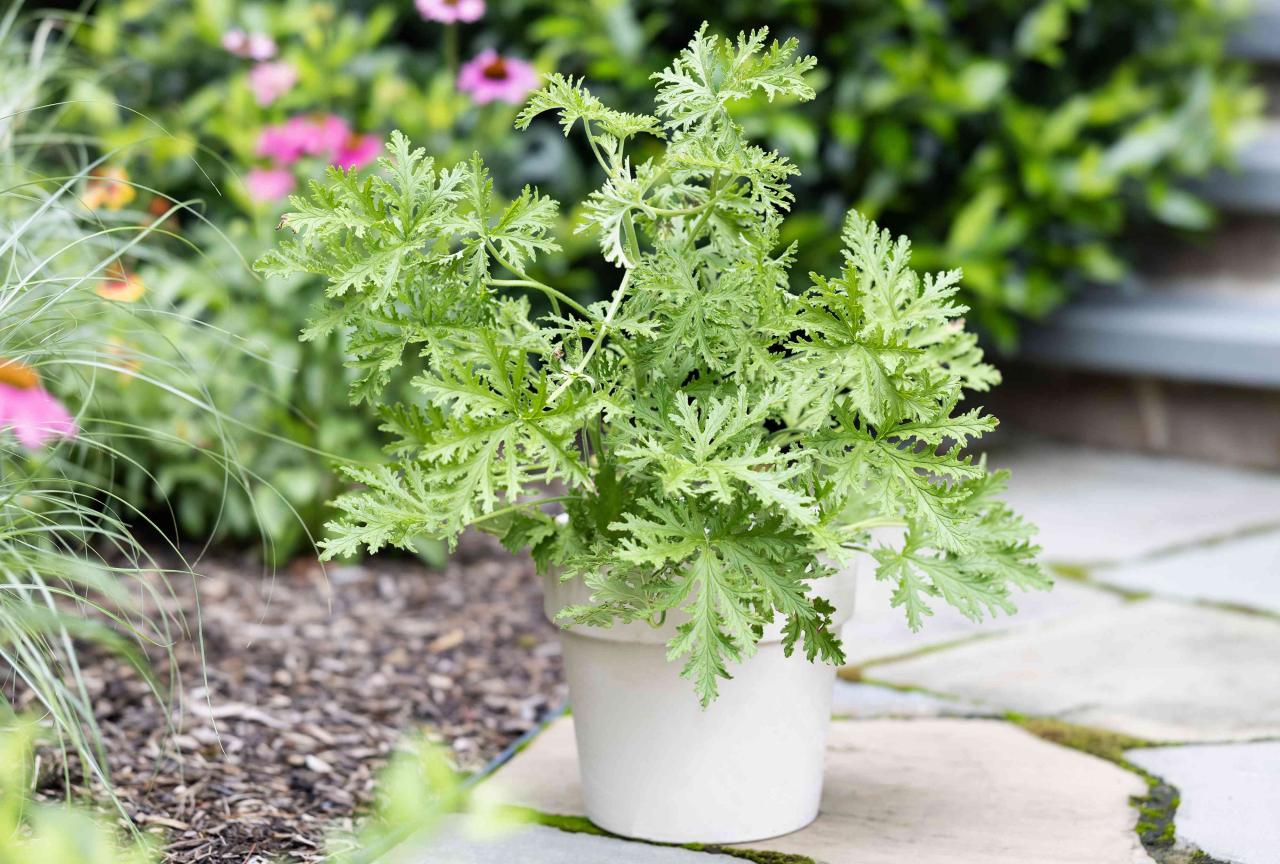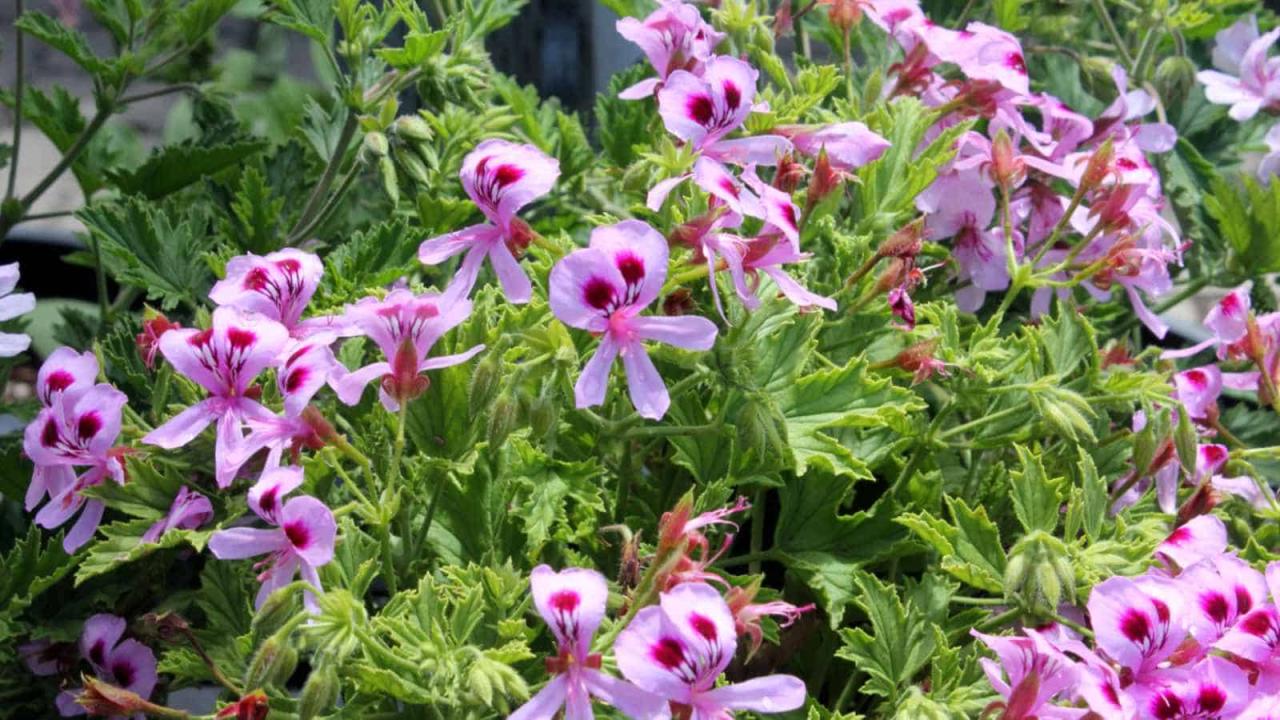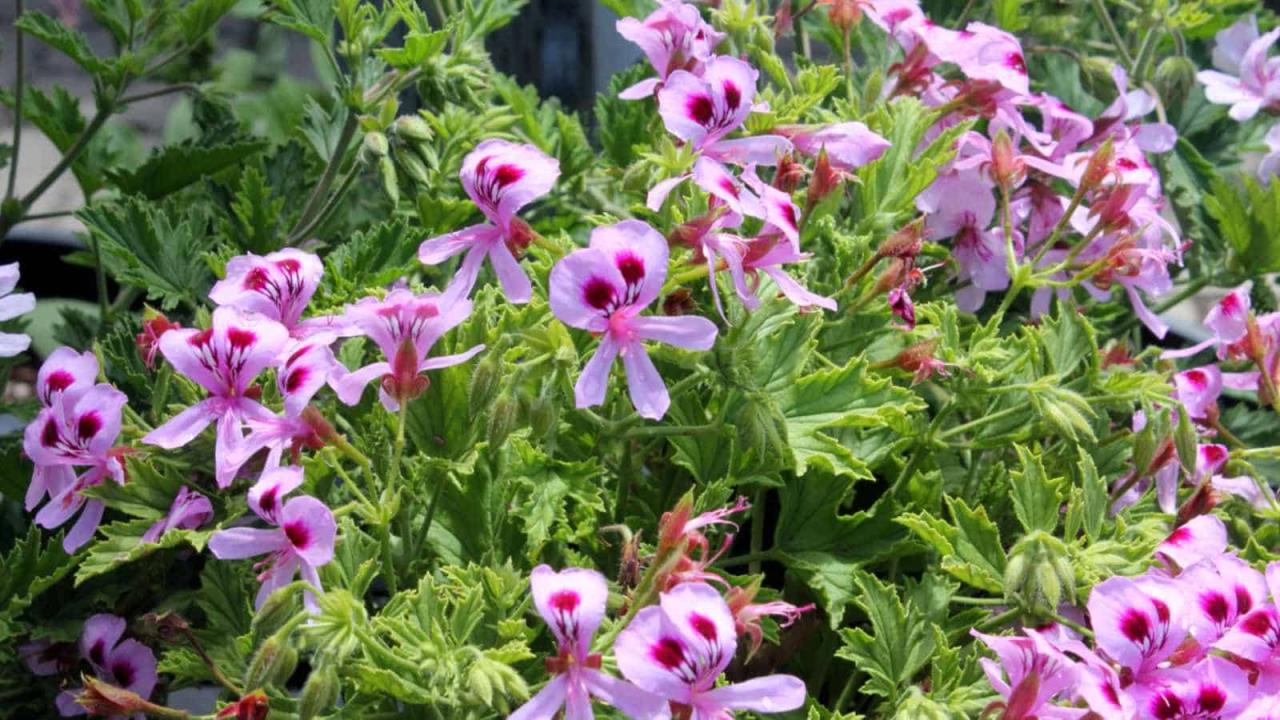How to Cultivate Citronella Plant for a Beautiful and Functional Garden is a comprehensive guide for gardeners looking to incorporate this versatile and fragrant plant into their outdoor spaces. Citronella, known for its distinctive lemony scent and natural insect-repelling properties, offers a unique blend of aesthetics and functionality.
This guide delves into the history, uses, and cultivation of citronella, providing a step-by-step approach to growing this plant successfully. From choosing the right variety to understanding its specific needs, we’ll explore everything you need to know to cultivate healthy and vibrant citronella plants.
Introduction to Citronella Plants
Citronella plants, scientifically known asCymbopogon* species, are aromatic grasses native to Southeast Asia. These versatile plants have been cultivated for centuries, primarily for their essential oil, which is extracted from their leaves and stems. Citronella’s unique scent, often described as lemony and citrusy, has led to its widespread use in various applications, from traditional medicine and perfumery to modern-day insect repellents and aromatherapy.
The Many Uses of Citronella
The versatility of citronella extends beyond its fragrant qualities. Its applications are diverse and have been recognized for centuries.
- Natural Insect Repellent:Citronella oil is a well-known natural insect repellent, particularly effective against mosquitoes. This property is attributed to the presence of citronellal, a compound that disrupts the olfactory senses of insects, deterring them from biting.
- Aromatic Uses:Citronella’s distinctive scent has made it a popular ingredient in perfumes, candles, soaps, and other aromatic products. Its refreshing and uplifting aroma is often used in aromatherapy to promote relaxation and reduce stress.
- Culinary Applications:While less common, citronella leaves can be used in cooking, particularly in Southeast Asian cuisine. They add a subtle lemony flavor to dishes, often used in curries and stir-fries.
- Traditional Medicine:Citronella has a long history of use in traditional medicine. Its essential oil is believed to possess antimicrobial, antifungal, and anti-inflammatory properties, making it a potential remedy for various ailments.
Aesthetic Benefits of Citronella in Gardens, How to Cultivate Citronella Plant for a Beautiful and Functional Garden
Beyond its practical uses, citronella plants contribute to the beauty and functionality of gardens.
Cultivating citronella plants is a rewarding endeavor, adding both beauty and functionality to your garden. Their fragrant leaves repel mosquitoes, making your outdoor space more enjoyable. If you’re looking to expand your garden with vibrant blooms, consider propagating roses from cuttings, as outlined in this comprehensive guide: How To Propagate Roses From Cuttings: Your Guide to a Lush and Colorful Garden.
Once established, your citronella plants will thrive, offering a natural and effective defense against pesky insects, ensuring you can enjoy your garden to the fullest.
- Attractive Foliage:Citronella plants feature long, slender leaves that create a graceful and visually appealing presence in gardens. The vibrant green foliage adds texture and depth to landscaping.
- Natural Pest Control:Planting citronella can deter pests naturally, reducing the need for chemical pesticides. This promotes a healthier and more sustainable gardening environment.
- Fragrant Gardens:The distinctive scent of citronella can create a pleasant and inviting atmosphere in gardens, enhancing the overall sensory experience.
Choosing the Right Citronella Variety

While all citronella plants offer a certain level of mosquito repelling properties, some varieties are more effective and aesthetically pleasing than others. Choosing the right variety depends on your specific needs, climate, and desired look for your garden.
Citronella Grass Varieties
Several citronella grass varieties are commonly cultivated, each with unique characteristics and benefits.
- Cymbopogon nardus (Ceylon Citronella):This variety is highly valued for its essential oil production, which is used in perfumes, soaps, and insect repellents. It features a tall, clumping growth habit and produces a strong, lemony scent. This variety thrives in warm, humid climates and requires full sun exposure.
- Cymbopogon winterianus (Java Citronella):This variety is known for its milder scent compared to Ceylon citronella and is often used in culinary applications. It has a more compact growth habit and can tolerate cooler temperatures than Ceylon citronella.
- Cymbopogon citratus (Lemongrass):While not technically a citronella grass, lemongrass shares similar mosquito-repelling properties and is often mistaken for citronella. It is commonly used in Asian cuisine and features a strong lemony aroma. Lemongrass prefers warm climates and requires full sun exposure.
Choosing the Best Citronella Variety for Your Garden
Consider the following factors when selecting the best citronella variety for your garden:
- Climate:Ceylon citronella thrives in warm, humid climates, while Java citronella can tolerate cooler temperatures. Lemongrass also prefers warm climates.
- Scent:Ceylon citronella has a strong, lemony scent, while Java citronella has a milder aroma. Lemongrass also has a strong lemony scent.
- Appearance:Ceylon citronella has a tall, clumping growth habit, while Java citronella is more compact. Lemongrass has a similar growth habit to Ceylon citronella.
- Purpose:If you are looking for a strong mosquito repellent, Ceylon citronella is a good choice. If you are looking for a milder scent, Java citronella is a better option. Lemongrass is often used in culinary applications.
Planting Citronella
Planting citronella is a simple process that requires careful attention to a few key factors. By providing the right conditions and following the proper steps, you can ensure healthy growth and enjoy the benefits of this beautiful and functional plant.
Optimal Conditions for Planting Citronella
Citronella thrives in warm, sunny conditions and well-drained soil. It prefers a pH level between 6.0 and 7.0, indicating slightly acidic to neutral soil. Here are some key aspects to consider:
- Soil Type:Citronella prefers loose, well-drained soil that allows for good aeration and prevents waterlogging. Sandy loam or a mixture of sand, loam, and compost is ideal. Avoid heavy clay soils that can retain too much moisture.
- Sunlight Requirements:Citronella requires at least 6 hours of direct sunlight per day to flourish. It can tolerate some shade, but it will not grow as vigorously or produce as much essential oil.
- Temperature Preferences:Citronella is a tropical plant that thrives in warm temperatures. It can tolerate some cold, but it will not grow as well in areas with frequent frost or freezing temperatures.
Planting Citronella Seeds or Seedlings
Once you have selected the right location and prepared the soil, you can begin planting your citronella.
- Direct Sowing Seeds:Citronella seeds can be sown directly into the ground in warm climates after the last frost. Sow the seeds 1/4 inch deep and space them 12-18 inches apart. Keep the soil moist until germination, which typically takes 10-14 days.
- Planting Seedlings:If you are starting with seedlings, it’s best to plant them in the spring or early summer after the last frost. Dig a hole slightly larger than the root ball and gently loosen the roots. Place the seedling in the hole and backfill with soil, making sure the top of the root ball is level with the ground.
Water thoroughly after planting.
Watering and Fertilizing Citronella Plants
Proper watering and fertilizing are crucial for establishing healthy citronella plants.
- Watering:Water your citronella plants regularly, especially during the first few weeks after planting. The soil should be kept moist but not soggy. During dry periods, water more frequently.
- Fertilizing:Apply a balanced fertilizer to your citronella plants every 4-6 weeks during the growing season. This will provide the necessary nutrients for healthy growth and essential oil production.
Caring for Your Citronella Plant: How To Cultivate Citronella Plant For A Beautiful And Functional Garden
Providing proper care for your citronella plant is crucial for its health, growth, and scent production. Regular maintenance practices, such as watering, fertilizing, and pruning, will ensure your citronella thrives and effectively repels unwanted insects.
Watering Citronella Plants
Watering your citronella plant correctly is vital for its growth and health. Citronella plants prefer well-drained soil and should be watered regularly, especially during dry periods. Overwatering can lead to root rot, so it’s important to allow the soil to dry slightly between waterings.
- Frequency:Water your citronella plant deeply when the top inch of soil feels dry to the touch.
- Amount:Provide enough water to thoroughly soak the soil, but avoid letting the plant sit in water.
- Time:Water in the morning to allow the soil to dry somewhat before nightfall, reducing the risk of fungal diseases.
Fertilizing Citronella Plants
Fertilizing your citronella plant regularly can boost its growth and scent production. Use a balanced liquid fertilizer diluted to half strength every two weeks during the growing season. Avoid over-fertilizing, as it can damage the plant.
- Type:A balanced liquid fertilizer with a ratio of 10-10-10 or 20-20-20 is suitable for citronella plants.
- Frequency:Apply fertilizer every two weeks during the growing season (spring and summer).
- Dilution:Dilute the fertilizer to half strength before application.
Pruning Citronella Plants
Pruning your citronella plant helps maintain its shape and encourages bushier growth. Prune the plant in early spring before new growth emerges.
- Timing:Prune your citronella plant in early spring before new growth emerges.
- Method:Use sharp pruning shears to cut back any dead, diseased, or overgrown stems.
- Shape:Pinch back the tips of stems to encourage bushier growth and a more compact shape.
Pest Control and Disease Prevention
Citronella plants are generally resistant to pests and diseases, but they can still be susceptible to certain issues. Regular inspection and proactive measures can help prevent problems.
- Inspect Regularly:Check your citronella plant for signs of pests or diseases, such as discoloration, wilting, or insects.
- Treat Pests:If you find pests, use a safe and effective insecticide or organic pest control methods.
- Prevent Diseases:Maintain good air circulation around your citronella plant and avoid overwatering to reduce the risk of fungal diseases.
Maximizing Citronella Growth and Scent Production
To maximize your citronella plant’s growth and scent production, consider these tips:
- Sunlight:Provide your citronella plant with at least six hours of direct sunlight daily.
- Soil:Plant your citronella in well-drained soil with a slightly acidic pH.
- Mulch:Apply a layer of organic mulch around the base of the plant to retain moisture and suppress weeds.
- Harvesting:Harvest the leaves for use in repellents or other applications when they are at their peak fragrance.
Integrating Citronella into Your Garden Design

Citronella plants are not only functional but also aesthetically pleasing, adding a touch of elegance and fragrance to your garden. Their vibrant green foliage and feathery plumes create a captivating visual appeal, making them a versatile addition to various garden styles.
Incorporating Citronella into Different Garden Styles
Citronella plants seamlessly blend into various garden styles, enhancing their overall aesthetic and functionality.
- Cottage Gardens:Citronella’s graceful plumes and lush foliage perfectly complement the informal and romantic charm of cottage gardens. They can be planted alongside roses, lavender, and other fragrant herbs, creating a symphony of scents and textures.
- Herb Gardens:Citronella’s natural insect-repelling properties make it an ideal addition to herb gardens. Plant it alongside basil, rosemary, and thyme, creating a fragrant and pest-resistant haven.
- Container Gardens:Citronella thrives in containers, making it a perfect choice for balconies, patios, and small spaces. Combine it with other fragrant plants like geraniums, marigolds, or petunias for a vibrant and aromatic display.
Visualizing Citronella in a Garden Design
Imagine a garden where vibrant hues of lavender, pink, and yellow dance amidst a backdrop of lush green foliage. Citronella plants, with their feathery plumes and bright green leaves, create a captivating contrast against the colorful blooms.
- Companion Planting:Plant citronella alongside marigolds and basil to repel insects and create a natural pest control system. The marigolds attract beneficial insects like ladybugs, which prey on aphids and other garden pests, while basil helps to repel mosquitoes and flies.
Cultivating citronella plants is a rewarding endeavor, offering a beautiful and functional addition to your garden. These fragrant plants not only add a touch of visual appeal but also act as a natural insect repellent. To maximize their effectiveness, it’s crucial to understand the best ways to utilize citronella’s insect-repelling properties.
The Best Ways to Use Citronella Plant for Keeping Bugs at Bay: Expert Advice provides a comprehensive guide to harnessing this natural defense, ensuring a peaceful and enjoyable outdoor experience. By implementing these strategies, you can effectively deter pesky insects and create a serene garden oasis.
- Color Schemes:Citronella’s green foliage complements a wide range of colors, making it a versatile plant for various garden themes. Pair it with vibrant hues like pink, purple, and yellow for a bold and lively display, or with softer tones like white, cream, and blue for a more calming effect.
Using Citronella as a Natural Border or Barrier
Citronella’s insect-repelling properties make it an effective natural border or barrier.
- Perimeter Planting:Plant citronella around the perimeter of your garden to deter insects from entering. Its fragrant oil will act as a natural repellent, creating a protective barrier.
- Strategic Placement:Strategically place citronella plants near entryways, patios, or areas where insects tend to congregate. This will help to keep these areas free from pesky insects.
Harvesting and Using Citronella
Citronella plants offer a multitude of uses beyond their aesthetic appeal, primarily stemming from their aromatic leaves and stems. These parts are rich in essential oils, known for their insect-repelling properties and delightful fragrance. Harvesting citronella for its valuable properties requires a simple yet mindful approach, ensuring you reap the maximum benefits while maintaining the plant’s health.
Harvesting Citronella
The optimal time for harvesting citronella is during the plant’s peak growth period, typically during the summer months when the leaves are lush and full of essential oils. Here’s how to harvest citronella leaves and stems:
- Choose mature leaves:Select leaves that are fully grown and have a vibrant green color. Avoid harvesting leaves that are yellowing or damaged.
- Cut with sharp shears:Use clean and sharp shears to cut the leaves and stems about 2-3 inches above the soil level. This encourages new growth and maintains the plant’s health.
- Harvest selectively:Do not harvest all the leaves at once. Leave some leaves behind to allow the plant to continue photosynthesizing and growing.
Drying Citronella Leaves
Dried citronella leaves are versatile and can be used in various applications, including potpourri, crafts, and even as a natural air freshener. Here are some methods for drying citronella leaves:
- Air drying:This method involves hanging the harvested leaves in a well-ventilated area, away from direct sunlight. It takes about 1-2 weeks for the leaves to dry completely.
- Oven drying:Preheat your oven to the lowest setting, around 150-200 degrees Fahrenheit. Place the leaves on a baking sheet lined with parchment paper and dry for about 30 minutes, or until they are crisp.
Using Citronella
Dried citronella leaves can be used in various ways, depending on your preference. Here are some popular uses:
- Potpourri:Add dried citronella leaves to a bowl of potpourri for a refreshing and insect-repelling scent.
- Craft projects:Use dried citronella leaves to create decorative wreaths, garlands, and other crafts.
- Natural air freshener:Fill a small cloth bag with dried citronella leaves and place it in a room or closet to freshen the air and deter insects.
Making Citronella Candles
Citronella candles are a popular way to enjoy the insect-repelling properties of citronella oil. To make your own citronella candles, you will need:
- Soy wax flakes:Soy wax is a natural and eco-friendly option for candle making.
- Citronella essential oil:Choose a high-quality citronella essential oil for the best scent and effectiveness.
- Candle wicks:Select wicks that are appropriate for the size of your candle jar.
- Candle jars:Choose jars that are heat-resistant and have a lid for easy storage.
Recipe:
- Melt the soy wax flakes in a double boiler or microwave-safe bowl.
- Once the wax is melted, add the citronella essential oil. Start with a few drops and adjust to your desired strength.
- Carefully pour the wax into the candle jars, ensuring the wick is centered.
- Allow the candles to cool and harden completely before lighting.
Making Citronella Insect Repellent
Citronella oil can be used to make an effective and natural insect repellent. Here’s a simple recipe:
- Ingredients:
- 1/2 cup witch hazel
- 1/4 cup distilled water
- 15 drops citronella essential oil
- 10 drops lavender essential oil (optional)
- Instructions:
- Combine all ingredients in a spray bottle and shake well.
- Apply the repellent to exposed skin, avoiding the eyes and mouth.
- Reapply as needed, especially after sweating or swimming.
Other Natural Remedies
Citronella oil has a wide range of applications beyond insect repelling. It can be used in various natural remedies, such as:
- Massage oil:Add a few drops of citronella oil to a carrier oil, such as almond oil or coconut oil, and use it for a relaxing massage.
- Bath oil:Add a few drops of citronella oil to your bathwater for a refreshing and invigorating experience.
- Aromatherapy diffuser:Add a few drops of citronella oil to your aromatherapy diffuser to enjoy its calming and uplifting scent.
Closure
By following the guidelines Artikeld in this guide, you can confidently cultivate citronella plants, transforming your garden into a haven of natural beauty and pest-free enjoyment. Whether you’re seeking a fragrant addition to your flower beds, a natural insect repellent, or a unique design element, citronella offers a multifaceted solution for any gardener.
Helpful Answers
What are the best companion plants for citronella?
Citronella pairs well with other aromatic herbs like rosemary, lavender, and basil. These plants complement each other’s scent and deter pests, creating a harmonious and fragrant garden environment.
Can I grow citronella in containers?
Yes, citronella thrives in containers. Choose a pot with drainage holes and use a well-draining potting mix. This allows for optimal growth and prevents waterlogging.
How do I know when my citronella plant needs watering?
Check the soil moisture by inserting your finger a few inches deep. If the soil feels dry, it’s time to water. Water deeply and allow excess water to drain.
